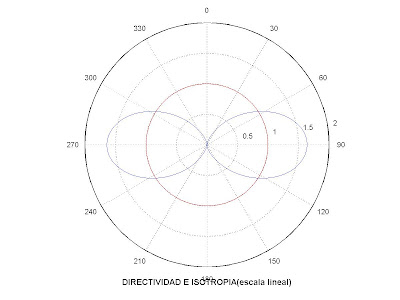Hello everyone, this time I am going to share with you a project I did for my antennas class. It consist of calculating and plotting the parameters of a FINITE LENGTH DIPOLE antenna on paper and using Matlab.
Well, the first thing you have to do is to read Chapter 4 (Linear Wire Antennas) (4.5 Finite Lenght Dipole) of the book ANTENNA THEORY Analysis and Design, 3th edition, author: Constantine A. Balanis.
All the parameters that are treated in 4.5 of the book, are plotted and calculated with Matlab (.mfile uploaded) and calculated on paper (Pdf file uploaded).
How to use the Matlab file:
1. Download the mfile.
2. Write on Matlab addpath (and the location where you downloaded the mfile)
Example: addpath c:\matlab\work
3. Run the function on Matlab. But first you have to change L by the lenght of the dipole in wavelength, ra by the radius of the dipole in wavelength, frec by the frequency you design the dipole in hz. The function is the following:
[Rr,Xm,Rin,Xin,Prad,Emax,Wavmax,Umax,Do,DdB,Aem]=antenaFelixRuiz(L,ra,frec)
All the parameters for this antenna are calculated assuming that the diameter is considerably smaller than the operating wavelength. And these are only for a dipole of wavelength between 0 and 3 wavelengths, 0<= Lambda<=3. When you run the mfile and do the calculations you have to obtain the following parameters shown in the figure.
For example:
For a half-wavelength dipole of radius 5mm. and a frequency of 100Mhz, we have a radius of 0.0016 wavelength.
Call the function:
[Rr,Xm,Rin,Xin,Prad,Emax,Wavmax,Umax,Do,DdB,Aem]=antenaFelixRuiz(0.5,0.0016,100*10^6)
Rr =
73.1296
Xm =
42.5445
Rin =
73.1296
Xin =
42.5445
Prad =
36.5648
Emax =
40.0000
Wavmax =
2.1221
Umax =
4.7746
Do =
1.6409
DdB =
2.1509
Aem =
1.1752
Figure n°1 Current distribution.
figure n°2 Electric field pattern (in linear scale)
figure n°3 3D Electric fiel pattern
figure n°4 Linear plot of Electric field pattern (lobes)
figure n°5 Poynting vector
figure n°6 Radiation intensity
figure n°7 Directivity and isotropy (dimensionless)
figure n°8 3D Directivity and isotropy








